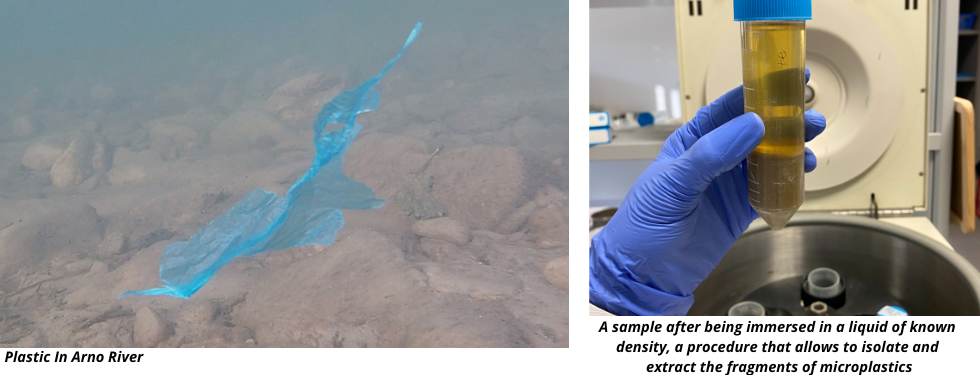Microplastics: a new study shed light on how they are trapped within the fluvial sediments

Around 9 billion tonnes of plastic have been produced by humans since the early 1950s and over the past few years the global production of these materials has increased exponentially, reaching about 400 million tons per year.
Plastic pollution has nowadays become one of the most significant environmental problems and the main reason is that, once released into the environment, these materials are subject to fragmentation and degrade into tiny particles, the microplastics.
Microplastics measure from five millimeters to thousandths of a millimeter, and they easily end up in the oceans, damaging habitats and posing very relevant risks for the health of our planet and all its inhabitants.
Rivers play a key role in the transfer of microplastics from the land to the sea, to the point of being considered as a kind of conveyor belts.
However, during this transfer microplastics can be trapped in the sediments where they can stay for decades absorbing contaminants or being furtherly fragmented by biological and physical processes. For this reason, understanding the mechanisms that regulate the sedimentation of microplastics in rivers is an extremely important research area.
A study, "Mechanisms of microplastics trapping in river sediments: Insights from the Arno river (Tuscany, Italy)", led by the Department of Geosciences of the University of Padua and recently published in the peer-review journal Science of the Total Environment, analyzed the sediments of the Arno River, (in Tuscany - Central Italy), in order to investigate the mechanisms that control the transport and storage of microplastics in fluvial sediments.
“We collected sediment samples immediately after two major flood events and tried to understand what the microplastic content was in the deposits. We focused on different types of clastic sediments: gravels, which are usually transported only during large flood events, and finer sediments, such as sands, which are also mobilized during minor floods, and mud which are associated with the waning phase of the flood”, explains Prof. Massimiliano Ghinassi, first author of the study.
“We applied the principles of fluvial sedimentology aiming at understanding how a river can move microplastics and can store them within different types of sediments, including even plant debris”, Ghinassi adds.
The difference in density between the plastic and the sediments allowed the authors of the research to develop a procedure in the laboratory to separate the microplastics from the sediments.
“Our samples had been immersed in a liquid of known density. Then we extracted the fragments of microplastics and we went to the microscope and Raman micro-spectroscopy in order to be able to describe them: one of the most relevant results is the fact that almost 90% of microplastic fragments derive from textile materials. Therefore they are essentially fibres”, said Prof. Massimiliano Zattin, co-author of the study.
The overall concentration of microplastic in Arno River ranges between 0.44 and 5.68 items per gram, and is comparable with that of some highly-polluted rivers in the world.
“It is somewhat intuitive to expect to find microplastics within fine sediments associated with settling processes. However, their common occurrence in sand suggests that these particles are easily entrapped within the bedload”, added Francesca Uguagliati, PhD student of the Department of Geosciences who participated in the study.
“We found microplastics in all the samples, regardless of depositional context. Particularly high concentrations of microplastics have been identified in the gravels, since during the waning phases of the floods these particles manage to infiltrate and accumulate among the sediment grains” observes Alessandro Michielotto, PhD student and co-author of the study.
Understanding the mechanisms by which plastic microparticles move and accumulate in our rivers is essential to be able to manage and protect the quality of our resources and associated ecosystems.
Press information:
Article title: Mechanisms of microplastics trapping in river sediments: Insights from the Arno river (Tuscany, Italy). Science of The Total Environment, 2023
Authors: Massimiliano Ghinassi, Alessandro Michielotto, Francesca Uguagliati, Massimiliano Zattin
Link: https://www.sciencedirect.com/science/article/pii/S0048969722083772
DOI: https://doi.org/10.1016/j.scitotenv.2022.161273
Further information can be requested from the main author of the study: Massimiliano Ghinassi (massimiliano.ghinassi@unipd.it)





